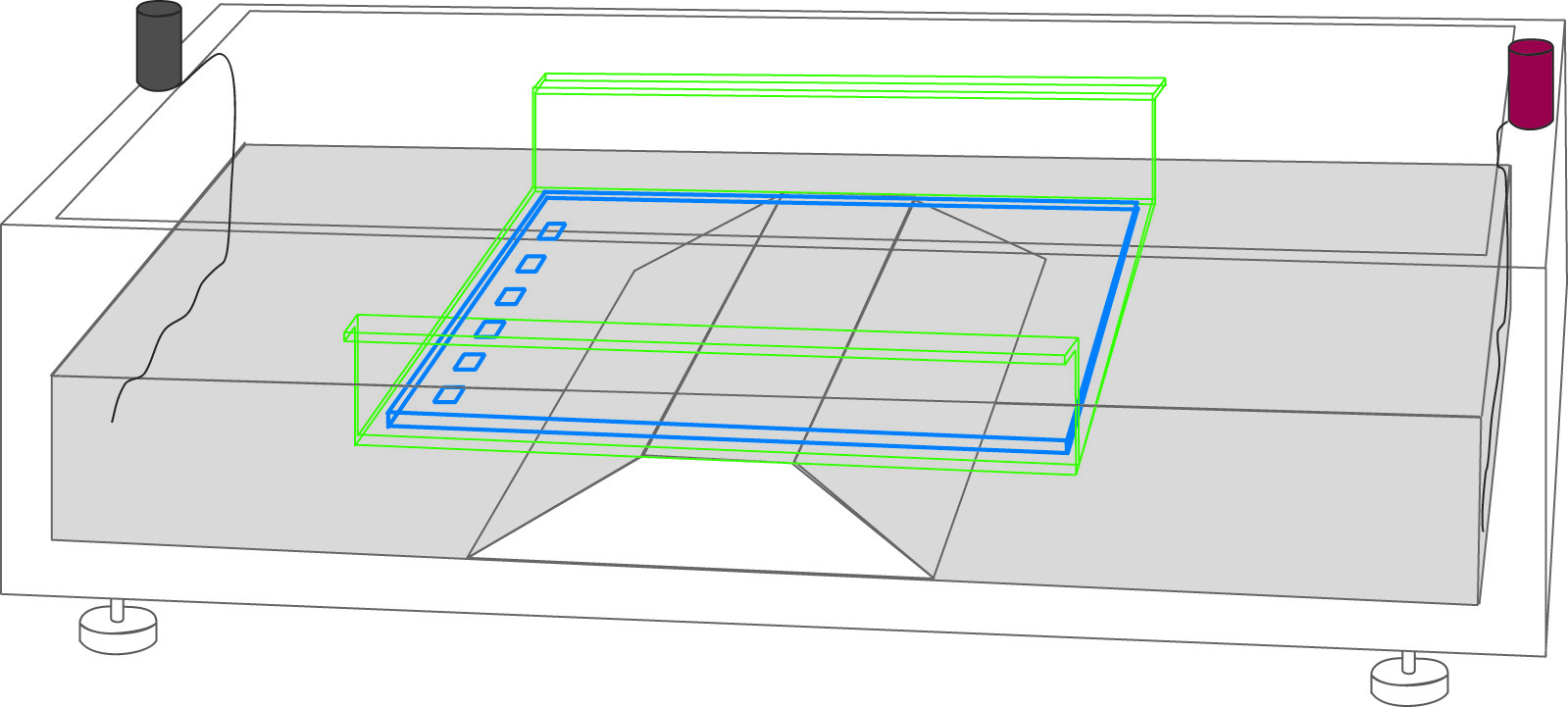Post Electrophoretic Analysis Articles
Horizontal and Vertical Gel Systems – The Horizontal Gel System
A gel electrophoresis apparatus must allow the researcher to maintain a uniform electric field across the gel, provide cooling to prevent thermal artifacts, and allow access to the gel for sample loading and monitoring the run. Two types of apparatus are in common use: vertical and horizontal. Vertical gel systems are further subdivided into slab gels and tube gels. In general, agarose gels are run in the horizontal format, while acrylamide gels are run vertically.
The Horizontal Gel System Explained

The Horizontal Gel Electrophoresis Apparatus. The gel rests on a platform that divides the apparatus into two chambers. Note that the buffer level is higher than the surface of the gel, so the two buffer chambers are connected. Samples loaded into the wells will migrate toward the positive electrode.
In its simplest form, a horizontal gel apparatus consists of a box that is divided into two compartments by a platform in the middle. The gel is placed on this platform, and the buffer is added until the gel is fully submerged. Electrodes in each compartment supply the electric field. The resulting current flows through both the gel and the buffer over the gel, so the thickness of these must be controlled for fully reproducible results. Cooling is provided by the buffer which surrounds the gel, and this buffer is often recirculated to prevent the development of a pH gradient and also to aid in temperature control. Access to the gel is through the overlaying buffer. Samples are loaded through this buffer layer, and the apparatus has a clear lid to allow the run to be monitored.
One major limitation of the horizontal apparatus is that, since the two compartments are connected by a layer of buffer, it is not possible to use discontinuous buffer systems. Another limitation is that the gels are cast in trays that are not covered. Because atmospheric oxygen has full access to the upper surface of the gel, acrylamide will not polymerize in this system. Horizontal systems are primarily used to run agarose gels which are run in continuous buffer systems and are not affected by O2. For agarose gels, the simplicity and ease of use of the horizontal system make this system the best choice.
NEXT TOPIC: Horizontal and Vertical Gel Systems - Vertical Tube Gels
- The Polyacrylamide Matrix-Buffer Strength
- The Polyacrylamide Matrix
- The Mechanical and Electrical Dynamics of Gel Electrophoresis — Electrophoresis System Dynamics
- The Mechanical and Electrical Dynamics of Gel Electrophoresis – Ohm’s Law
- The Mechanical and Electrical Dynamics of Gel Electrophoresis – Intro and Sample Mobility
- The Electrophoresis Matrix
- The Agarose Matrix
- Radioactive Emissions and the Use of Isotopes in Research
- Multiphasic Buffer Systems
- Horizontal and Vertical Gel Systems – Vertical Tube Gels
- Horizontal and Vertical Gel Systems – The Vertical Slab Gel System
- Horizontal and Vertical Gel Systems – The Horizontal Gel System
- Homogeneous Buffer Systems
- Faint bands, low background
- Faint Bands, High Background
- Ethidium Bromide Staining
- Electrophoresis Buffers-Choosing the Right Buffer
- Electrophoresis Buffers–The Henderson-Hasselbalch Equation
- Coomassie Blue Stain- Troubleshooting
- Buffer Additives-Surfactants
- Buffer Additives-Reducing Agents
- Buffer Additives-Hydrogen Bonding Agents
- Biological Macromolecules: Nucleic Acids
- Biological Macromolecules – Proteins
